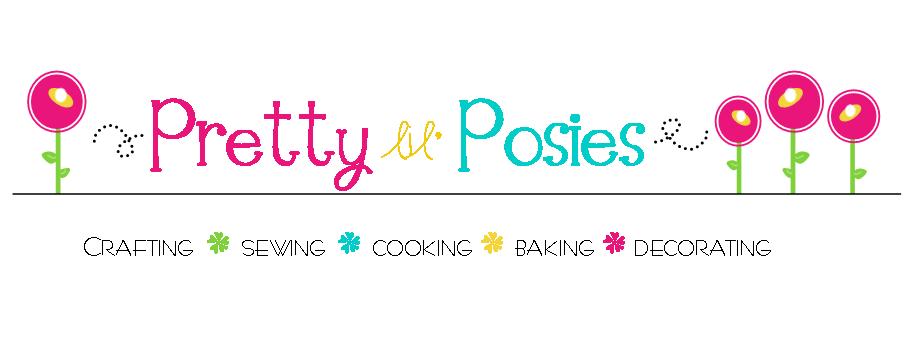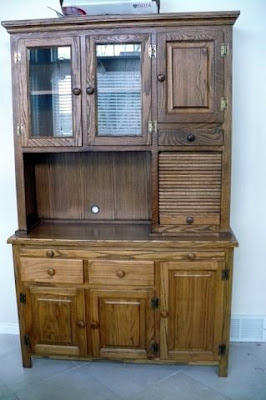Wow! I am blown away by all your nice comments on my parent's
kitchen makeover. I've received quite a few emails and questions about it so I thought I'd putt all the answers all in one post for everyone to find in case other people had the same questions. I'm warning you though, this is a loooong post.
I have to tell you up front I, nor my parents are experts on doing this stuff so please before you try any of this do some research. This is just how
SHE did it. Not necessarily the perfect way to do it! ;0) You can find a ton of information on both painting your cabinets and faux granite painting by googling, googling, and more googling! I know there are also helpful youtube videos as well.
Now let me tell you how she did her cabinets. The biggest pain of the whole process was waiting for the oil-based stain to dry but she's glad she used oil-based because a lot of neighbors used a regular wall paint on theirs and they are chipping much easier and not holding up as well. Remember oil-based smells very strong. It's nice to do it during the summer when windows can be opened and the sun can help things dry faster!!
The first thing she did was remove all the doors and drawer faces and took off all the hardware. Next she washed all the cabinetry with a
TSP (Trisodium Phosphate) solution. You can find it at Home Improvement stores. This removes all the grease which is really what you are trying to do...especially around the stove.
Next she taped off all the cabinets with painters tape and filled in all the holes from the drawer pulls with a wood filler and allowed it to dry a little.
Next she lightly sanded everything and used a liquid sander deglosser like
this one. She applied it with a sponge. Than she washed and dried them off. By the time she got to the last few cabinets, she was very lazy with the glossing and the sanding and they probably didn't get much if anything! The beauty of gel stain is that it will stick to a shiny surface. She doesn't know if the cabinets that got less attention will hold up as well but the stain seemed to apply the same way and they look the same and so far don't seem any different from the ones she suffered more over with all the extra prepping.
Next she rolled on a mixture of oil based gel stains like this
one. She thinks it was Min-Wax brand she used and it was a mixture of the two darkest brown colors she could get, one had a red tint to it. She used an ice cream bucket with a lid to combine the two cans of gel stain in. She used the foam rollers you can find at the dollar store (sometimes) to roll on so that way she didn't feel bad about tossing it. I know it's not the "green" thing to do but have you had to clean up oil based paint? It's a pain!
The gel paint is a bit tricky to use. if you roll it too much, you pick up the coat of paint you already rolled on. She used a foam brush to dab on little spots that were bare. Even though it is a stain she didn't wipe it off like you usually do with stains. She left it on exactly as it rolled on. She wanted to see some of the wood grain but not enough to look like she had used a stain. She wanted it somewhere in between the look of a stain versus the look of painted wood. Because she left it on thick it took 24 hours at least to dry. She applied an average of two coats just to get the color even. After everything was dry, she took a small can of ebony or black regular oil stain. She scooped out some of her mixture of gel stains into another small plastic throw-away container with a lid (maybe a cup or two???) She added a little bit of black oil liquid stain at a time to darken it to almost black. With piece of old T-shirt she wiped this mixture on, mostly in the recessed areas like antiquing to give it a little more depth and shadow there. Also along the edges. She found that if she got too much black, she could wipe it off or if it was still too black, she would go back to the original gel mixture and add more of that. She did this repeatedly until she got just the right depth of color and shading.
After everything was dry, she wiped thin coats of oil based Polyurethane mixed with some thinner (about 4:1 mixture maybe). She didn't like using the full strength Polyurethane because it was too shiny, even though she got the satin sheen. She found that wiping it off eliminated stroke marks as well. She had to do 3 to 4 coats or more but it went really fast. Some probably had more coats in an attempt to equal out the shine. Next, my Dad rehung all the cabinetry and added all the hardware.
A warning though, she has found little dings here and there on her cabinets but you can just do a little touch up. That's why she keeps small containers of both the original gel mixture and the blackened mixture in a kitchen drawer. Every few weeks she does touch-ups here and there. She now has found an even easier way to do touch-ups. Because her cabinets are a mixture of colors including the black she can get away with using a black sharpie for touch ups! Yes, that's right, a sharpie! She just dabs it on the nicked spot and then blends it with her finger. If it were a large area than she'd use the original paint but usually it's just tiny nicks. She probably doesn't have as many dings as someone with small children who'd be driving trucks and swinging toys into the cabinetry.
Next up The Faux Granite
The box store paint employees told my mom that faux painting counters could not be done, especially with acrylic craft paint and not to bother trying it. There are even some kits you can purchase with "special" paint but it's really all the same technique. She decided it was risky to try, but if it didn't work out she was willing to replace her counter tops and cabinet doors anyway so nothing would be lost but time and the cost of supplies if it didn't work out. It's been a few months now and so far no regrets at all!!!
See
this post to get all the steps for painting faux granite. I would suggest practicing on something. My mom practiced everything on her laundry room cabinets and counter and that is how she discovered she didn't like using the oil-based polyurethane because they went very yellow. If you don't have a laundry room to practice in, maybe you have a small bathroom counter and cabinets. She used wipe on water-based polyacrylic and as I said before she did about 10 coats to protect it. It was a definite pain, trying to get the foam "brush" strokes out and she finally had to give up and live with it in a few areas. Another thing I forgot to mention is, don't ever put anything hot directly on your counters. It will leave marks. She always makes sure to use a hot pad or trivet. She had to do that with the old counter to avoid marks so it's nothing new. She did end up with one "ring" where someone put a hot pan directly onto the counter. She still hasn't had any regrets and is enjoying a completely different look for not a lot of money.
There. Did you make it? I think I've answered all the questions I received but if I missed any then you can leave them in the comments below and if you have any helpful links you can also share those as well. Hopefully this helps someone. Good luck!

































































